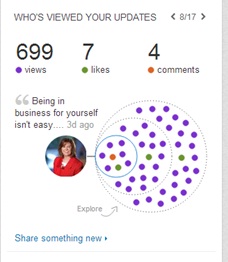Through a serendipitous turn of events, I attended yesterday’s The Visit 2013 with His  Holiness the Dalai Lama. It was my first experience hearing the Dalai Lama speak. A couple of years ago, I read his book Beyond Religion: Ethics for a Whole World, but I had not watched or listened to any of the many videos posted online.
Holiness the Dalai Lama. It was my first experience hearing the Dalai Lama speak. A couple of years ago, I read his book Beyond Religion: Ethics for a Whole World, but I had not watched or listened to any of the many videos posted online.
When a change of plans meant her husband could not attend the event, my colleague and friend, Sue Ryan invited me to go in his place. Sadly, my first gut reaction was to say no. I almost used the excuse that I was “too busy”, that I needed to stay focused on my work. Thankfully, the next voice I heard was go!
The past year has been fairly tumultuous both personally and professionally. Since October 2012 until about May of 2013, it seemed to me that everything was in a state of deep decline. It felt as if everything that could go wrong did, in fact, go wrong. I was ready to chuck my business, sell everything I owned and head to the highest mountaintop to live out my life alone, but in peace.
With breakdown comes breakthrough.
When the going gets a little rough, it can be easy to fantasize about how wonderful it would be to run away. But long ago, I came to realize that wherever I go, there I am. Changing the scenery, the people in our lives or trying out a new career may work for a while, but at some point we inevitably find ourselves right back where we started. With that in mind, and as has been my practice for many years, I started to look inward much more closely.
And just like the changing of the seasons, things began to change for the better.
While I don’t have all the pieces buttoned up just yet, I do know that I want to merge my personal and professional passions into something that allows me to do well, but more importantly, to do good on a bigger scale. I’m pretty sure that there is more to the meaning of life than just talking about Social Selling.
We need to stop talking idle words and take action into creating a more compassionate world.
It is pretty obvious that, as a whole, our society and much of the world is driven by fear, anger and hate. There seems to be this constant undertone of “I’m going to get mine even if it means harming someone else.” Harming someone else, by the way, shouldn’t be thought of in just the physical sense either. Our words, deeds and actions have tremendous power to harm – and they do! Though Sue and I made our plan to arrive very early and missed much of the traffic snafu’s, I read later that others didn’t necessarily behave in an enlightened manner as they made their way to the Gwinnet Center. How many bruised feelings were caused by people on their way to hear his Holiness speak about compassion? Do you get the pathetic irony here?
There were so many things that resonated with me as I listened to the Dalai Lama speak. Here are 7 of them:
- We must reduce extreme self-centered attitudes.
- We need to develop a sense of oneness, everything is interdependent.
- Destruction of your neighbor is destruction of yourself.
- Of the 6 billion people claiming to believe in some religious doctrine, very few actually live by the teachings in their daily lives.
- Pay more attention to a healthy mind and body. In fact, a healthy mind leads to a healthy body. Scientifically, it is proven that negative emotions eat away at our immune systems.
- Change starts with individuals not governments. If you live in the United States, it is pretty obvious that our government officials have agendas other than compassion and ensuring the well-being of the people that they serve. Where is the compassion in putting people out of work (not themselves, of course) because they cannot come together to resolve important issues due to their sheer ego, arrogance and greed?
- We can change the world through education and by leading with action and enthusiasm. Mindful living and compassion can be taught. Then, we must put both of these into practical application.
I have always believed myself to be a pretty good person. Probably the most important value I carry with me in my heart is an inherent respect for others and the belief that we are all created equally. It drives me to try and do right no matter the situation. After listening to the Dalai Lama speak though, I have to say that I can do much more, and I intend to!
Will you join me in a commitment to create a more compassionate world and way of living? I hope so!









